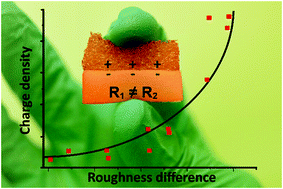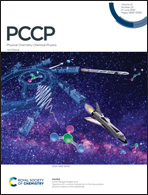Contact electrification between identical polymers as the basis for triboelectric/flexoelectric materials†
Abstract
Polymer contact electrification offers the possibility to harvest mechanical energy using lightweight, flexible and low-cost materials, but the mechanism itself is still unresolved. Several recent studies confirm heterolytic covalent bond breaking as the mechanism for surface charge formation. Here it is shown that the reason for the formation of surface charge by contacting two identical polymers results from the fluctuation in the surface irregularities, and that contacted materials with a greater porosity or surface roughness differential result in a greater generation of surface charge. Porosity and surface roughness create uneven surface length percentage changes in the lateral direction during deformation, which changes the charge density across the surface during relaxation. Multilayered membranes exhibit flexoelectric properties upon pressing and releasing by generating charge without separating individual membrane layers. This new insight deepens the understanding of polymer contact electrification and highlights better ways to prepare triboelectric or flexoelectric nanogenerator devices.



 Please wait while we load your content...
Please wait while we load your content...